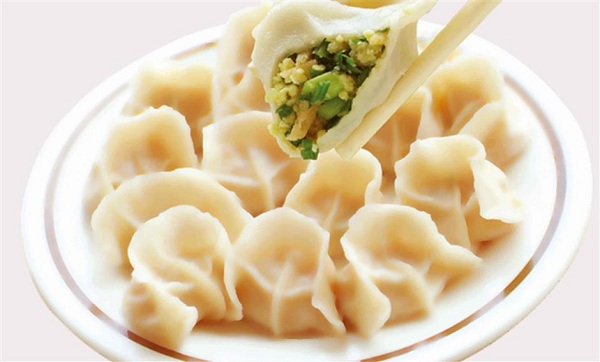
Dumpling is a symbol of Spring Festival. (Ti Gong)
Dumplings have long been equated with the Spring Festival, both as a culinary and cultural symbol.
Made of a flour wrapper and various fillings, dumplings are a staple in northern China. One origin of the dish is traced back to the Eastern Han Dynasty (AD 25-220), when Zhang Zhongjing, a physician, writer and inventor, created dumplings as a remedy to fend off the coldness with ingredients like lamb and peppers wrapped in flour sheets.
Programs like the Spring Festival gala on state broadcaster always emphasize the tradition of eating dumplings to celebrate Spring Festival, but in reality, not all places in China do so and the ceremonial food selection is much broader.
Rice cakes are one of the common Spring Festival dishes consumed across China. With the pronunciation of niangao, which implies "getting higher year by year," the sweet cakes made of rice or glutinous rice symbolize growth in all aspects of life, like a child's height, a prosperous business, better grades in study and promotions at work.
An ancient tale of rice cake's origin centers on a monster called nian, a predator that lived in deep forests all year long.
From spring to fall, nian preyed on other animals, but when the cold winter arrived and other animals went into hiding, nian would come down the mountain and eat people.
To solve this problem, a clan by the family name Gao prepared a large quantity of squared grain bars and placed them outside their doors.
People hid in their houses and waited for nian to come. When nian couldn't find any people to eat, it started to eat the grain bars and left when it was full.
Then the people would come out and congratulate each other for escaping nian safe and sound. The method was continued year after year and gradually people named the grain bars niangao, after nian the monster and gao the clan that defeated it.
As a food, rice cakes have a long history in China. "Shi Ci," a cookery book from the sixth century, includes a recipe for making rice cake known as baijiantang (白茧糖):
"After steaming the glutinous rice, pound the rice into a cake, cut into the size of a walnut and air dry. Deep-fry the cakes in oil and coat with sugar when served."
Rice cakes are associated especially with Jiangnan, the region south of the Yangtze River, where rice is the dominant staple.
Jia Sixie, author of "Qimin Yaoshu," a book of agricultural texts, from the Northern Wei period (AD 386-534), recorded another rice cake recipe that uses ground rice flour instead of steaming the rice directly, which is more like modern rice cakes. After grinding the glutinous rice and sieving, water and honey are added to form a harder dough. Jujubes and chestnuts are stuck on top, and they are wrapped with indocalamus leaf and steamed until fully cooked.
An early record of eating rice cakes during Spring Festival was found in "Yun Xian Za Ji," a book from the Tang Dynasty (AD 618-907), which mentions "eating yulianggao on the 15th day of the first lunar month."
The word niangao appeared for the first time in "Gu Su Zhi," a chronicle of the Suzhou region from the Ming Dynasty (1368-1644), where rice cakes were a dominant festival food.


















































